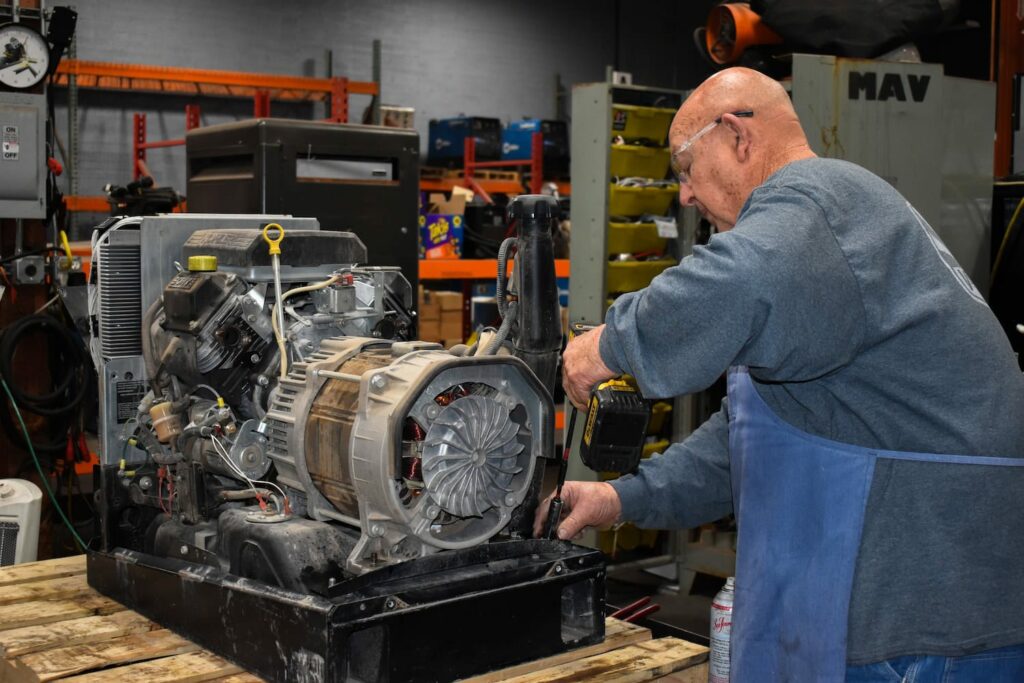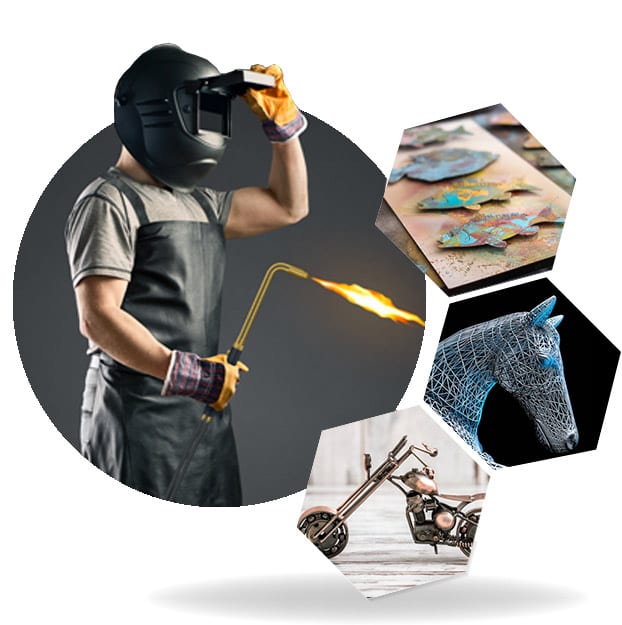All About Welding: Secret Insights Into Techniques and Best Practices for Success
Welding encompasses a range of techniques, each matched for specific materials and applications. Understanding these techniques, such as GMAW, SMAW, and TIG, is vital for attaining ideal results. The right equipment and security methods can not be overlooked. As preparation and troubleshooting play important roles in the welding procedure, grasping these aspects can considerably improve the high quality of the end product. What are the crucial factors that assure a successful weld?
Understanding Different Welding Methods
Welding strategies encompass a variety of techniques, each matched to particular applications and materials. Amongst the most common techniques are Gas Metal Arc Welding (GMAW), Secured Metal Arc Welding (SMAW), and Tungsten Inert Gas Welding (TIG) GMAW, additionally called MIG welding, is prominent for its speed and flexibility, making it ideal for slim products. SMAW, or stick welding, is preferred for its simpleness and performance in outdoor environments, especially with thicker steels. TIG welding supplies accuracy and control, making it appropriate for detailed work and non-ferrous steels (Fabrication). Each strategy has its unique benefits and considerations, allowing welders to select the very best technique based upon the job's needs, product kind, and desired outcomes. Comprehending these methods is crucial for successful welding
Important Welding Equipment and Devices
While various welding methods require specific skills, the ideal tools and tools are similarly vital for achieving top quality results. Important welding devices includes welding devices, which vary relying on the method-- such as MIG, TIG, or stick welding. Safety equipment, consisting of aprons, headgears, and gloves, guarantees security and convenience during the procedure. Additionally, components and clamps aid safeguard materials in position, guaranteeing precision in welds. Consumables like welding rods, cable, and securing gas are also critical elements that affect the quality of the weld. Devices such as grinders and cutters assist in surface area preparation and post-weld completing, adding to a professional result. Spending in top quality equipment inevitably boosts the effectiveness and performance of welding projects.
Security Practices in Welding
Proper security techniques are necessary in the welding sector to shield employees from potential dangers. Welders need to use ideal individual safety tools (PPE), consisting of helmets with appropriate shading, handwear covers, and flame-resistant garments. Ample air flow is crucial to decrease exposure to unsafe fumes and gases produced throughout the welding process. Additionally, employees must be trained in the right handling of welding tools to protect against mishaps. Fire safety and security steps, such as maintaining flammable products away from the welding location and having fire extinguishers readily offered, are required. Normal inspections of tools and work spaces can assist determine possible threats before they lead to crashes. By adhering to these safety techniques, welders can produce a more secure working environment and decrease dangers related to their profession.
Preparing Materials for Welding
Preparing products for welding is an essential step that greatly affects the high quality and integrity of the end product (Welding). Correct preparation involves cleansing the surfaces to remove contaminants such as oil, corrosion, and dust, which can endanger the weld. Strategies such as grinding, sanding, or utilizing solvents are commonly used to achieve a tidy surface. Furthermore, ensuring that the products fit together comfortably is crucial; voids can lead to weak welds. It's likewise essential to take into consideration the positioning and positioning of the parts, as this will certainly impact the simplicity of welding and the last result. Lastly, picking the suitable filler material and making certain compatibility with the base steels is vital for attaining strong, long lasting welds
Tips for Achieving High-Quality Welds
Achieving high-grade welds calls for focus to detail and adherence to ideal methods throughout the welding procedure. Proper joint preparation is important, ensuring surfaces are tidy and totally free from impurities. Picking the ideal filler product and welding technique based on the base metals is crucial for optimal bonding. Maintaining regular traveling rate and angle while welding can promote and prevent problems harmony. In addition, controlling warm input is essential; excessive warmth can bring about bending and compromised joints. If essential, frequently checking the welds during the procedure allows for immediate changes. Utilizing appropriate post-weld treatments, such as cleansing and tension alleviation, can improve the toughness and honesty of the weld, ultimately making sure an effective end result.
Fixing Common Welding Issues
Welding frequently offers challenges that can influence the top quality and integrity of the last product. Usual problems such as porosity, inconsistent weld grains, and overheating can emerge, each needing particular repairing strategies. Comprehending these issues is crucial for welders to boost their abilities and attain ideal outcomes.
Porosity Issues Described
Porosity can typically be forgotten, it remains a critical concern in welding that can jeopardize the honesty of an ended up item. Porosity refers to the existence of tiny gas pockets within the weld grain, which can deteriorate the joint and lead to early failing. This problem generally arises from contaminants, wetness, or improper protecting gas protection throughout the welding procedure. To alleviate porosity, welders need to validate that the base products are completely dry and clean, use suitable securing gases, and keep constant welding parameters. Frequently evaluating the equipment and setting can likewise assist identify possible concerns prior to they show up in the weld. Attending to porosity successfully is necessary for attaining solid, durable welds that fulfill high quality standards.

Irregular Weld Beads
Inconsistent weld grains can substantially affect the high quality and toughness of a completed product. Numerous factors add to this problem, consisting of inappropriate travel rate, wrong amperage settings, and inconsistent electrode angles. When the welder relocates too quickly, a grain might appear narrow and do not have penetration, while relocating too directory slowly can trigger extreme buildup. Additionally, utilizing the incorrect amperage can cause either damaging or too much spatter, both of which concession weld honesty. The welder's technique, such as inconsistent torch activity, can likewise result in unequal grain appearance. To minimize these issues, welders need to concentrate on preserving consistent, regulated motions and ensuring proper tools setups to attain harmony in their welds. Consistency is vital to accomplishing strong and trusted welds.
Getting Too Hot and Warping Issues
Too much warm during the welding procedure can lead to substantial overheating and contorting issues, influencing the architectural integrity of the work surface. These problems frequently materialize as distortion, which can compromise positioning and fit-up, making more assembly testing. Aspects adding to browse around this web-site overheating consist of the option of welding criteria, such as voltage and take a trip speed, in addition to the kind of product being welded. To reduce these problems, welders must maintain regular traveling speed and suitable heat input while monitoring the work surface temperature. Furthermore, preheating or post-weld warm treatment can aid ease stress and anxieties triggered by quick cooling - Montana Mobile Welding and Repair. Normal evaluation and adherence to best techniques are crucial in stopping getting too hot and making certain the durability and integrity of bonded frameworks
Regularly Asked Questions
What Are the Occupation Opportunities in the Welding Industry?
The welding market provides varied profession possibilities, including placements as welders, instructors, inspectors, and engineers. Professionals can operate in manufacturing, building, aerospace, and automobile industries, taking advantage of solid need and affordable salaries in numerous duties.
Just How Can I Improve My Welding Speed Without Giving Up Top Quality?
To boost welding speed without compromising quality, one should exercise effective methods, preserve tools, optimize settings, and boost hand-eye sychronisation. Regular training and seeking responses can likewise significantly add to achieving faster, premium welds.
What Certifications Are Offered for Welders?
Numerous accreditations exist for welders, including those from the American Welding Culture (AWS), the National Facility for Building Education And Learning and Research (NCCER), and different industry-specific organizations. These credentials improve employability and demonstrate skill proficiency.
Exactly How Does Welding Influence the Residences of Metals?
Welding influences the homes of metals by changing their microstructure, which can cause changes in firmness, strength, and ductility. Warm input and air conditioning rates throughout the procedure significantly impact these product characteristics.
Can I Bonded Dissimilar Metals Together?
